Quality welding requires controlling thermal cycles. And taking a weld’s temperature is easy — all you need is a temperature-indicating stick, the most popular being Tempilstik. They’re an industry standard and work in most welding situations because of their ease of use, cost-effectiveness, and accuracy to ±1°F.
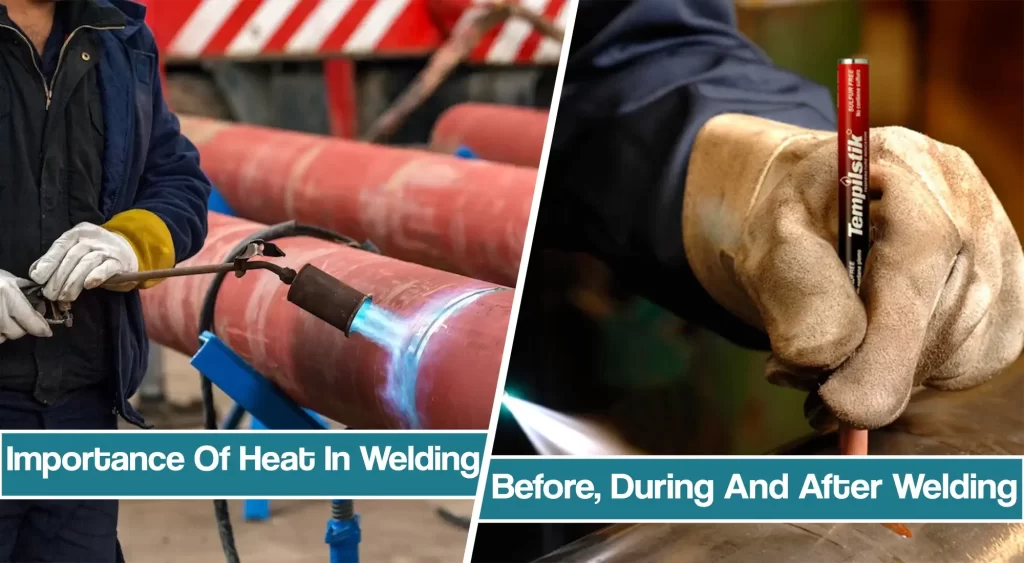
But using these sticks does not guarantee a quality weld. Instead, they help the welder if he uses them correctly and follows welding procedures. That’s why we will explain how monitoring heat before during and after welding can impact the weld quality.
The Importance of Controlling Thermal Cycles, During, And After Welding
Producing good welds depends, in part, on correctly applying and monitoring heat when required before, during, and after welding.
The whole thermal cycle for welding must be controlled, so the proper properties in the heat-affected zone (HAZ) and weld metal are obtained. Depending on the steel’s thickness and grade and the weld metal’s hydrogen content, welders must control preheat and interpass temperature and sometimes post-weld heating or cooling.
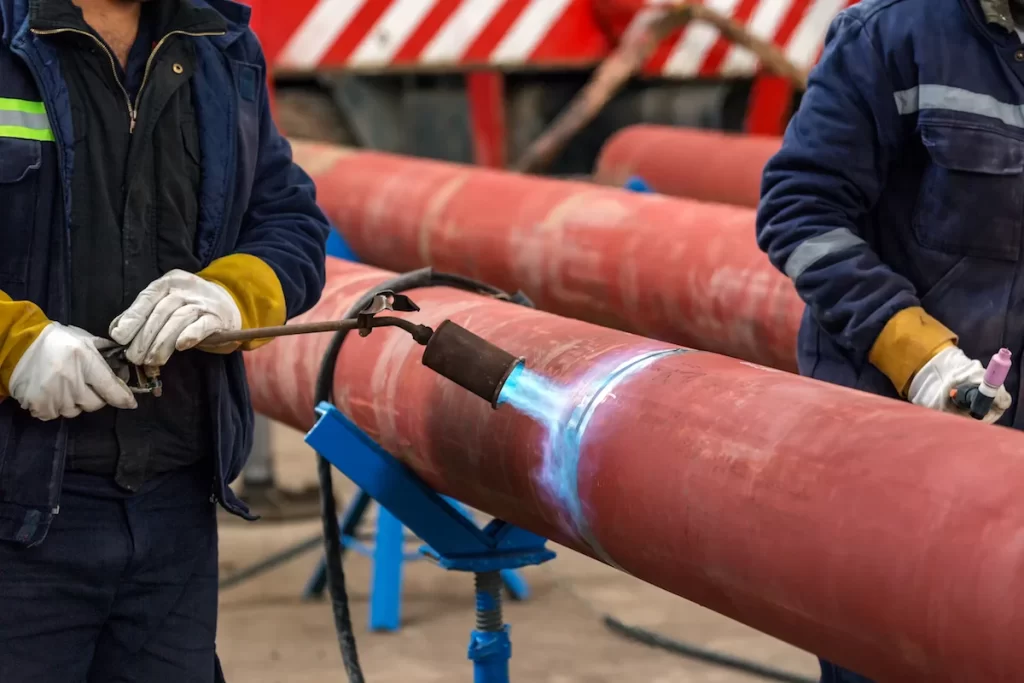
That sometimes means taking only a minimum temperature and sometimes minimum and maximum temperatures.
Many welders and manufacturers favor monitoring temperatures with temperature-indicating sticks instead of contact pyrometers or other devices. This is because experts in many applications don’t need to know the exact temperature of the steel. Instead, they want to ensure it’s above some minimum temperature and, in some cases, below some maximum temperature. To the trained welder, the concept is obvious, but some misuses could occur.
Preheat Temperature
Preheat is the temperature of the base material just before welding commences, not the temperature the day before, not two hours earlier, but at the time of welding. So heating 20 components to 100°F in a furnace, loading them in a basket, and transporting them to the welding station some distance away — as one English manufacturer did — does not work.
The fact that the parts were heated at some point in time before welding began is irrelevant. Parts must be heated to a specified temperature, and then that temperature must be maintained before welding begins.
Soaking Heat
Also important is where preheat is measured. For example, the applicable welding code may specify a specific-sized area around the joint to be preheated.
For example, AWS D1.1 — Structural Welding Code — Steel specifies that the preheat temperature is to be measured three inches in all directions away from the joint.
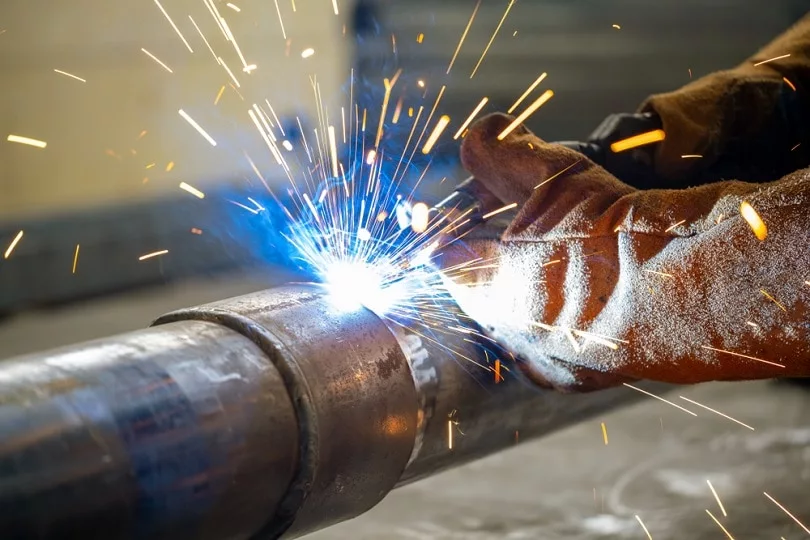
If the required minimum preheats and interpass temperature is 225°F, and the maximum interpass temperature is 400°F, then the material three inches in all directions from the joint — length, width, and depth — must all be between these limits. The effect is to “soak” the base material with heat, so the cooling rate is controlled.
A controlled cooling rate produces a more ductile metallurgical structure and allows hydrogen to diffuse. Both results reduce the potential for cracking. Preheat may also reduce shrinkage stresses.
Interpass Temperature
Interpass temperature is the temperature at which the second and subsequent weld runs are made. While preheat typically has a minimum requirement only, both minimums and maximums may be required for interpass temperature
Similar to the preheat, the minimum interpass temperature is used to control hydrogen cracking. In certain situations, the interpass temperature must be maintained for a minimum time so hydrogen escapes between runs. In these cases, the minimum interpass temperature is the minimum temperature reached between passes, not the minimum temperature at which a run is deposited.
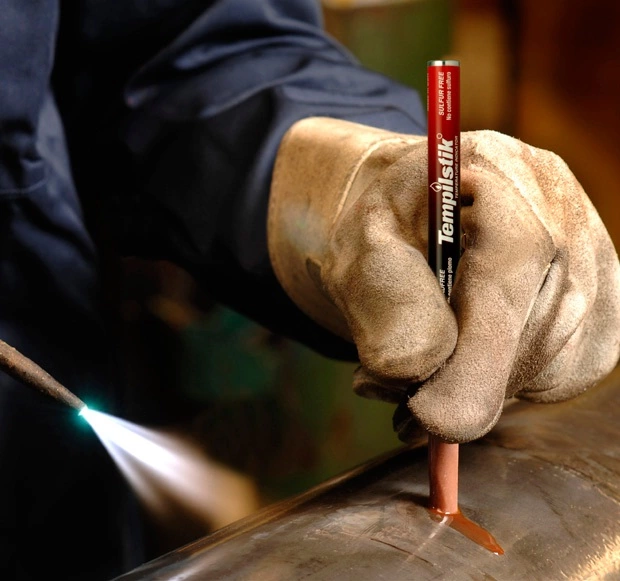
Some procedures may impose or limit the maximum interpass temperature, so the weld metal’s microstructural development is controlled.
Today’s metals Temperature Properties
With present-day steels and weld metals and the properties manufacturers want from them, the maximum interpass temperature is increasingly essential for stainless steels, quenched and temperature steels, and sometimes aluminum. And maximum interpass temperature is increasingly used in routine carbon and low-allow steel welding because of increased emphasis on the Charpy vee notch toughness of the weld metal and the heat-affected zone. Both depend on the minimum and maximum interpass temperatures, especially the maximum. Too hot, and the properties drop off, especially the toughness.
Maintaining a balance
That’s when using two temperature-indicating sticks comes into play again. The lower temperature one is used to measure both the minimum preheat and minimum interpass temperature, when both are the same, while the higher-temperature one measures the interpass temperature. Stay above one; stay below the other. One melts; the other doesn’t.
And if the upper-temperature mark melts, the joint must be cooled slowly in the ambient air until the upper-temperature crayon no longer dissolves. In contrast, the lower-temperature mark continues to melt. Then, welding may resume.
Temperature Pills and History of Temperature Indicating Sticks
In 1938, Harry Blumberg, chief metallurgist for M.W. Kellogg Co., began using organic compounds with known melting points as temperature indicators. Kellogg was fabricating submarine hulls for the Navy so preheat was critical.
Melting Point Standards, substances with known melting points, had long been used to test the accuracy of thermometers and thermocouples. But Blumberg’s use was innovative.
He sprinkled a few granules of a Standard on sections of metal to be welded. He then watched as a welder began preheating. When the granules melted, he told the welder to start. The welds were perfect.
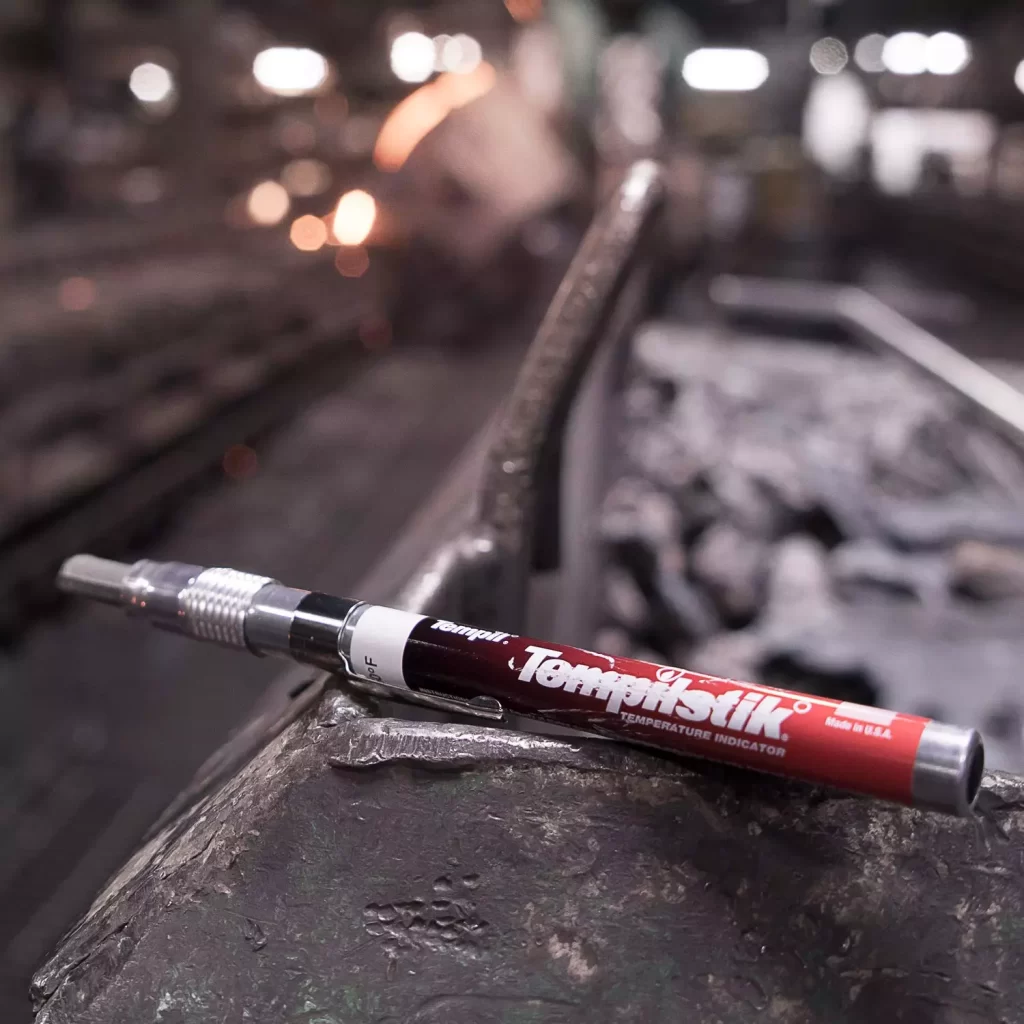
The Navy accepted the idea, so Blumberg created a series of substances with regular-interval melting points that would be used on metals requiring different preheat and stress-relief temperatures.
He decided on a pellet form. This became known as a temperature pill, then tempill, then tempil. They were an instant success. But welders used them differently. They made marks with the pellets and then watched the marks melt. Finally, the company extended the length into sticks, and Tempilstiks were born. Eventually, the original meaning of tempil was lost, becoming known as Tempil pellets.
Today, Tempilstik is the original temperature-indicating stick with the best combination of precision and convenience for surface temperature measurement. These sticks are specially engineered for accurate temperature indication in pre-heating, interpass, and post-weld heat treating applications, making them suitable for the most critical jobs.
Sources:
- https://www.sciencedirect.com/science/article/pii/S0308016119300596
- https://www.elsevier.es/en-revista-science-tecnology-materials-395-articulo-evaluation-effect-thermal-cycle-on-S2603636318300575
- https://www.permanentsteel.com/newsshow/factors-affecting-welding-thermal-cycle.html
- https://onlinelibrary.wiley.com/doi/abs/10.1002/srin.202000645





